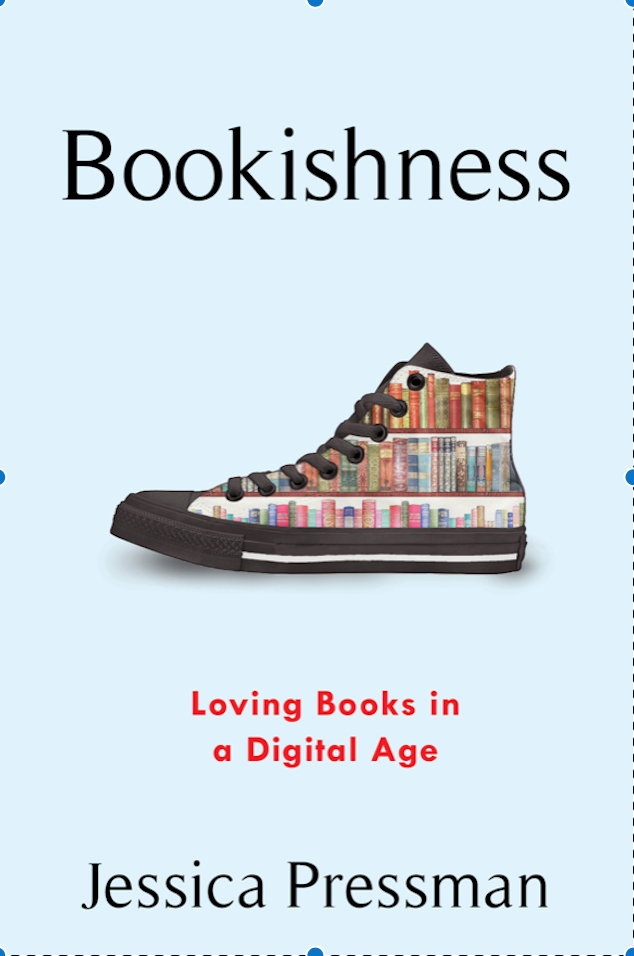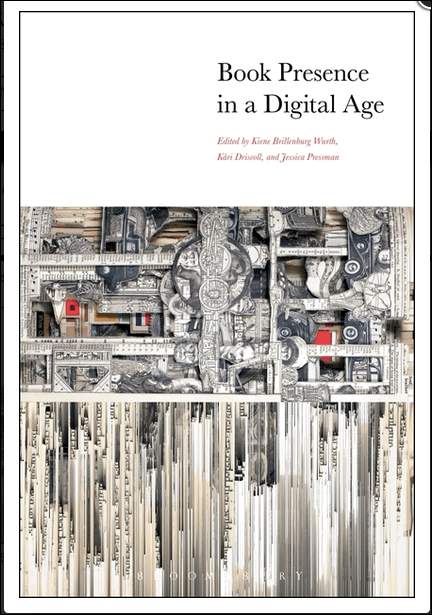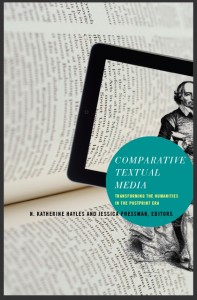BOOKISHNESS: Loving Books in a Digital Age (Columbia University Press, December 2020)
Twenty-first-century culture is obsessed with books. In a time when many voices have joined to predict the death of print, books continue to resurface in new and unexpected ways. From the proliferation of “shelfies” to Jane Austen–themed leggings and from decorative pillows printed with beloved book covers to bookwork sculptures exhibited in prestigious collections, books are everywhere and are not just for reading. Writers have caught up with this trend: many contemporary novels depict books as central characters or fetishize paper and print thematically and formally. Bookishness illuminates the status of the book as a fetish object and its significance for understanding contemporary fakery. Bringing together media studies, book history, and literary criticism, Bookishness explains how books still give meaning to our lives in a digital age.
**Winner of Electronic Literature Organization’s N. Katherine Hayles Award for Literary Criticism of Electronic Literature” (2021)**
–Named an “Outstanding Academic Title” by Choice, a publishing unit of the Association of College and Research Libraries, a division of the American Library Association, 2022
DIGITAL MODERNISM: MAKING IT NEW IN NEW MEDIA
(Oxford University Press, January 2014)

While most critical studies of born-digital literature celebrate it as a postmodern art form with roots in contemporary technologies and social interactions, Digital Modernism provides an alternative genealogy. Grounding her argument in literary history, media studies, and the practice of close-reading, Jessica Pressman pairs modernist works by Ezra Pound, James Joyce, and Bob Brown, with major digital works like William Poundstone’s Project for the Tachistoscope {Bottomless Pit}, Young-hae Chang Heavy Industries’s Dakota, and Judd Morrissey’s The Jew’s Daughter to demonstrate how the modernist movement of the 1920s and 1930s laid the groundwork for the innovations of electronic literature. Accordingly, Digital Modernism makes the case for considering these digital creations as “literature” and argues for the value of reading them carefully, closely, and within literary history.
CO-WRITTEN BOOK:
READING PROJECT: A COLLABORATIVE ANALYSIS OF WILLIAM POUNDSTONE’S Project for Tachistoscope {BOTTOMLESS PIT}
(University of Iowa Press, Spring 2015), with Mark C. Marino and Jeremy Douglass
**Winner of Electronic Literature Organization’s “N. Katherine Hayles Award” for Literary Criticism of Electronic Literature” (2016)
This book presents a case study for developing digital humanities methods of literary interpretation by close reading a born-digital literary work from three radically different methodological perspectives. I read the onscreen aesthetics, Mark Marino practices Critical Code Studies and analyzes the programming code, and Jeremy Douglass uses cultural analytics to show how data-visualizations stimulate literary interpretations. Together we collaborate in scholarly hermeneutics, weaving our interconnected questions into shared understanding while arguing that such transdisciplinary approaches provide the multiple perspectives necessary to illuminate digital poetics.
EDITED COLLECTIONS
BOOK PRESENCE IN A DIGITAL AGE
Co-edited with Kiene Brillenburg Wurth and Kári Driscoll
(Bloomsbury Press, 2018)
Contrary to the apocalyptic pronouncements of paper media’s imminent demise in the digital age, there has been a veritable surge of creative reimaginings of books as bearers of the literary. From typographic experiments (Mark Z. Danielewski’s House of Leaves, Steven Hall’s The Raw Shark Texts) to accordion books (Anne Carson’s Nox), from cut ups (Jonathan Safran Foer’s Tree of Codes) to collages (Graham Rawle’s Woman’s World), from erasures (Mary Ruefle’s A Little White Shadow) to mixups (Simon Morris’s The Interpretations of Dreams), print literature has gone through anythin g but a slow, inevitable death. In fact, it has re-invented itself materially.Starting from this idea of media plurality, Book Presence in a Digital Age explores the resilience of print literatures, book art, and zines in the late age of print from a contemporary perspective, while incorporating longer-term views on media archeology and media change. Even as it focuses on the materiality of books and literary writing in the present, Book Presence also takes into consideration earlier 20th-century “moments” of media transition, developing the concepts of presence and materiality as analytical tools to perform literary criticism in a digital age. Bringing together leading scholars, artists, and publishers, Book Presence in a Digital Age offers a variety of perspectives on the past, present, and future of the book as medium, the complex relationship of materiality to virtuality, and of the analog to the digital.
COMPARATIVE TEXTUAL MEDIA: TRANSFORMING THE HUMANITIES IN THE POSTPRINT ERA
Co-edited with N. Katherine Hayles
(University of Minnesota Press, 2013)
As traditional print-based humanities move into the digital era, this book is intended to promote such re-thinking. We collect essays by a wide variety of literary scholars who analyze text across diverse media formats and historical periods, to argue that literary critics and departments need to reorganize around the recognition that the study of text is a study of media.




